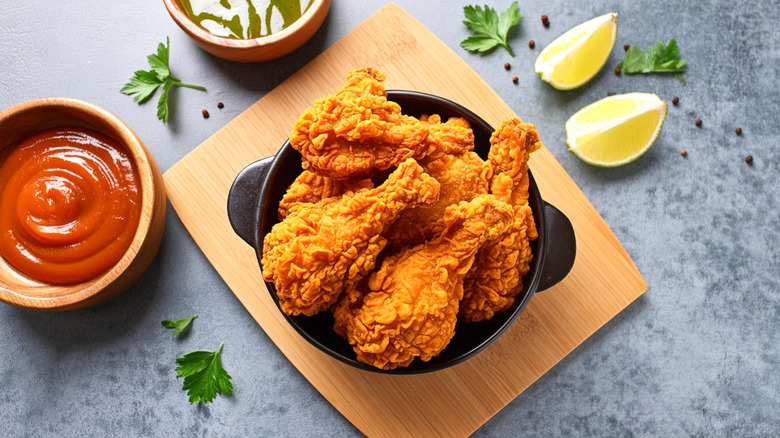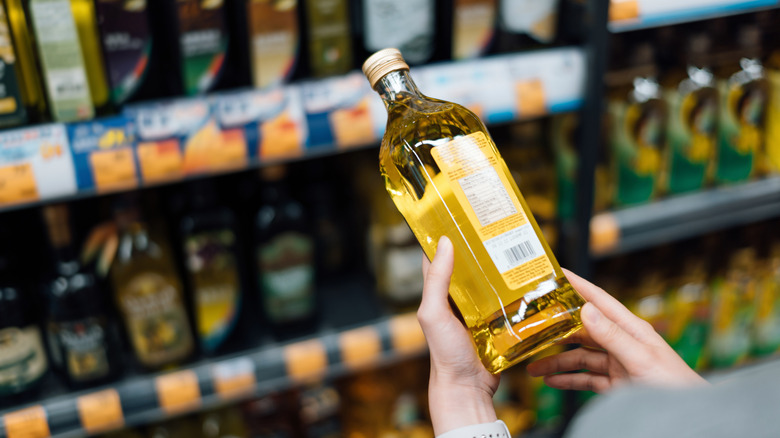
Habib CREATIVE/Shutterstock
One of the best parts of fried chicken is the golden, crackling exterior carved by shimmering, molten oil. But the wrong kind of oil can leave you with excess grease, which is not quite the seasoning that your lovely, tasty bird deserves. Crumpling up some paper towels like you’re a frustrated typewriter novelist and resting the finished poultry pieces is on top is a great way to soak up fried food grease. But more studiously selected ingredients can help mitigate greasiness before it starts. Chowhound plucked “Cowboy” Kent Rollins, cookbook author and host of Outdoor Channel’s “Cast Iron Cowboy,” for his exclusive oil picks.
According to Rollins, using an oil with a high smoke point like peanut, canola, or avocado oil will render better fried chicken that doesn’t have as much of a chance to become excessively greasy. “[These oils] cook the chicken faster,” Rollins says, “which helps reduce greasiness because the meat spends less time in the oil.” Which of those fats is truly best can still be left to personal preference. “Any high smoke point oil will do the job,” he says.
Canola is among the most common picks for frying oil, and the aforementioned peanut and avocado options also have their acolytes. Lard is also always on the table, and it can be hypnotic watching it melt down from its solid state to a consistency that’s actually suitable for frying. Vegetable oil is also among the more easily sourced fry fats. This is probably obvious by now, but the extra virgin olive oil populating so many pantries is a no-go for this application, as its smoke point is perilously low.
More keys to crispier, less greasy fried chicken

D3sign/Getty Images
“Cowboy” Kent Rollins cites a few primary culprits behind greasy chicken. “[It] comes from two main things: Not cooking at the right temp and not using the right batter or coating, and it is important to let it rest after it has been dredged and dipped on a wire rack to get that good crispy bite every time,” he says. An oil temperature that is too low means extending the amount of time the chicken sits in the oil and soaks it up. The temperature should hover between 350 and 375 degrees Fahrenheit. Modern dedicated frying appliances will have digital displays, and those frying on the stovetop must avail themselves of a specified frying thermometer. And, whether you’re using a wire rack, those crumpled paper towels, or some combination, resting the chicken for about 10 minutes, or at least until its time to serve, will give you one last, best shot at shaking off those final, shimmering drops.
For the crispiest fried chicken, consider using rice flour instead of the standard seasoned all-purpose variety, which can get soggy if sauce enters the equation. Rice flour is less vulnerable to oil absorption to begin with, leading to a more crackling bite. Sifting a sprinkle of cornstarch into the flour of your choice can also help sap a little extra grease. A few further ingredient swaps can put some unique twists on your signature fried chicken for times when you want to shake things up a bit.


Dining and Cooking